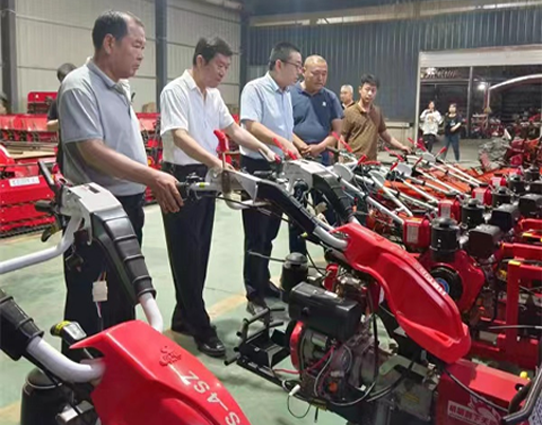Efficient Wheat Harvesting Techniques for Modern Agriculture Practices
The Essential Role of Wheat Harvesters in Modern Agriculture
Wheat, one of the world's most crucial staple crops, plays a significant role in feeding the global population. As demand for this essential grain continues to rise, efficient harvesting methods have become increasingly important. Wheat harvesters, specifically designed machinery, facilitate the timely and effective collection of wheat, ensuring that farmers can maximize their yields while minimizing labor costs. This article delves into the significance of wheat harvesters, their evolution, and the impact they have on agriculture.
The Evolution of Wheat Harvesting
Historically, wheat harvesting was a labor-intensive process carried out by hand. Farmers relied on tools such as scythes and sickles, which required considerable physical effort and skills. The introduction of mechanical harvesters in the late 19th and early 20th centuries marked a turning point in agricultural practices. The early harvesters combined cutting and threshing in one machine, drastically reducing the time and labor involved in harvesting wheat.
Throughout the decades, advancements in technology have led to the development of increasingly sophisticated harvesters. Modern wheat harvesters, or combines, are equipped with GPS technology, advanced sensors, and automation, allowing for precision farming that optimizes every aspect of the harvesting process. This evolution signifies not only a shift in efficiency but also a change in how farming is perceived, transforming it into a more technologically advanced industry.
Types of Wheat Harvesters
Wheat harvesters come in various forms, each suited for different types of operations and fields. The most common type is the combine harvester, which integrates multiple harvesting functions into one machine. These machines can cut, thresh, and clean wheat simultaneously, streamlining the process significantly.
Another type of harvester is the header, which can be attached to tractors for smaller operations. Headers allow farmers to use their existing machinery, making them a cost-effective option for those who may not need or afford a full combine harvester.
Specialized harvesters, such as self-propelled and pull-type combines, are also utilized based on the scale of the operation and the specific needs of the farmer. The choice of harvester often depends on factors such as field size, terrain, and crop variety, as well as the farmer's budget.
wheat harvester

The Importance of Wheat Harvesting Efficiency
The efficiency of wheat harvesters is critical for several reasons. Firstly, timing is essential in wheat harvesting; crops must be harvested at the right moment to ensure optimal quality and yield. Delays can lead to losses due to weather-related issues, such as rain or storms, which can damage crops left in the field.
Secondly, effective harvesting translates to economic benefits for farmers. With precision harvesting, grain loss is significantly reduced, and crop quality is maintained, leading to better prices in the market. Moreover, the reduced need for manual labor allows farmers to allocate their resources more effectively, contributing to overall productivity.
Lastly, the environmental impact of wheat harvesting cannot be overlooked. Modern harvesters are designed to be more fuel-efficient, reducing greenhouse gas emissions associated with agricultural practices. Furthermore, the precision of these machines allows for careful management of land and resources, promoting sustainable farming practices.
The Future of Wheat Harvesting
As agricultural technology continues to evolve, the future of wheat harvesting looks promising. Innovations such as drone technology, artificial intelligence, and data analytics are set to revolutionize the way farmers approach harvesting. These advancements will enable farmers to make informed decisions, improve crop management strategies, and adapt more quickly to changing environmental conditions.
Moreover, the growing emphasis on sustainable agriculture will drive the development of harvesters that use fewer resources while maintaining high efficiency. Consequently, the role of wheat harvesters will expand, becoming even more integral to ensuring food security in the years to come.
Conclusion
Wheat harvesters have transformed the agricultural landscape, facilitating efficient harvesting practices that benefit farmers and contribute to global food security. As technology continues to advance, these machines will play an even more significant role in ensuring that wheat remains a staple food source for the world's population. With ongoing innovations on the horizon, the future of wheat harvesting promises to be both efficient and sustainable.
Latest news
-
When to Upgrade Your Old Forage HarvesterNewsJun.05,2025
-
One Forage Harvester for All Your NeedsNewsJun.05,2025
-
Mastering the Grass Reaper MachineNewsJun.05,2025
-
How Small Farms Make Full Use of Wheat ReaperNewsJun.05,2025
-
Harvesting Wheat the Easy Way: Use a Mini Tractor ReaperNewsJun.05,2025
-
Growing Demand for the Mini Tractor Reaper in AsiaNewsJun.05,2025







